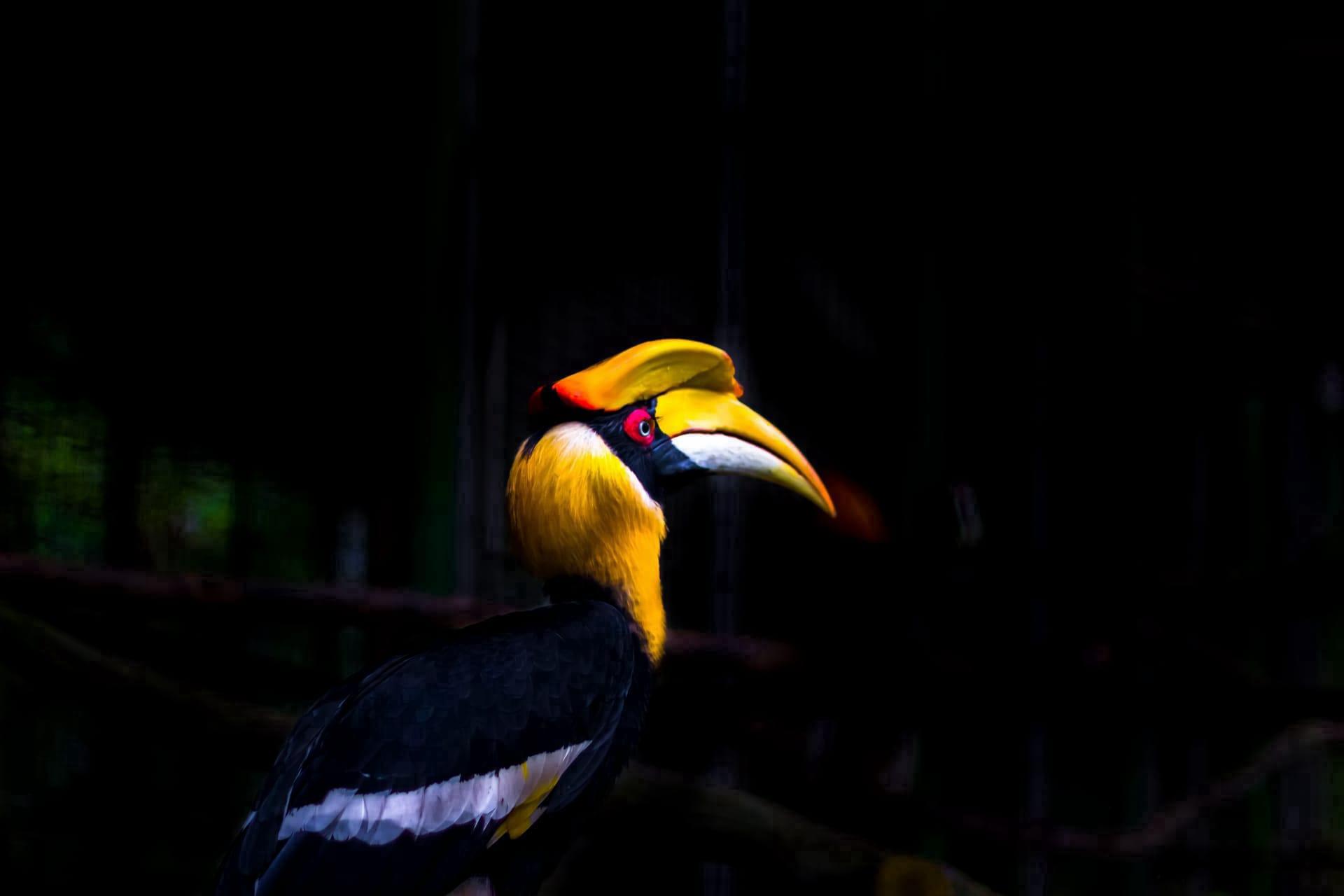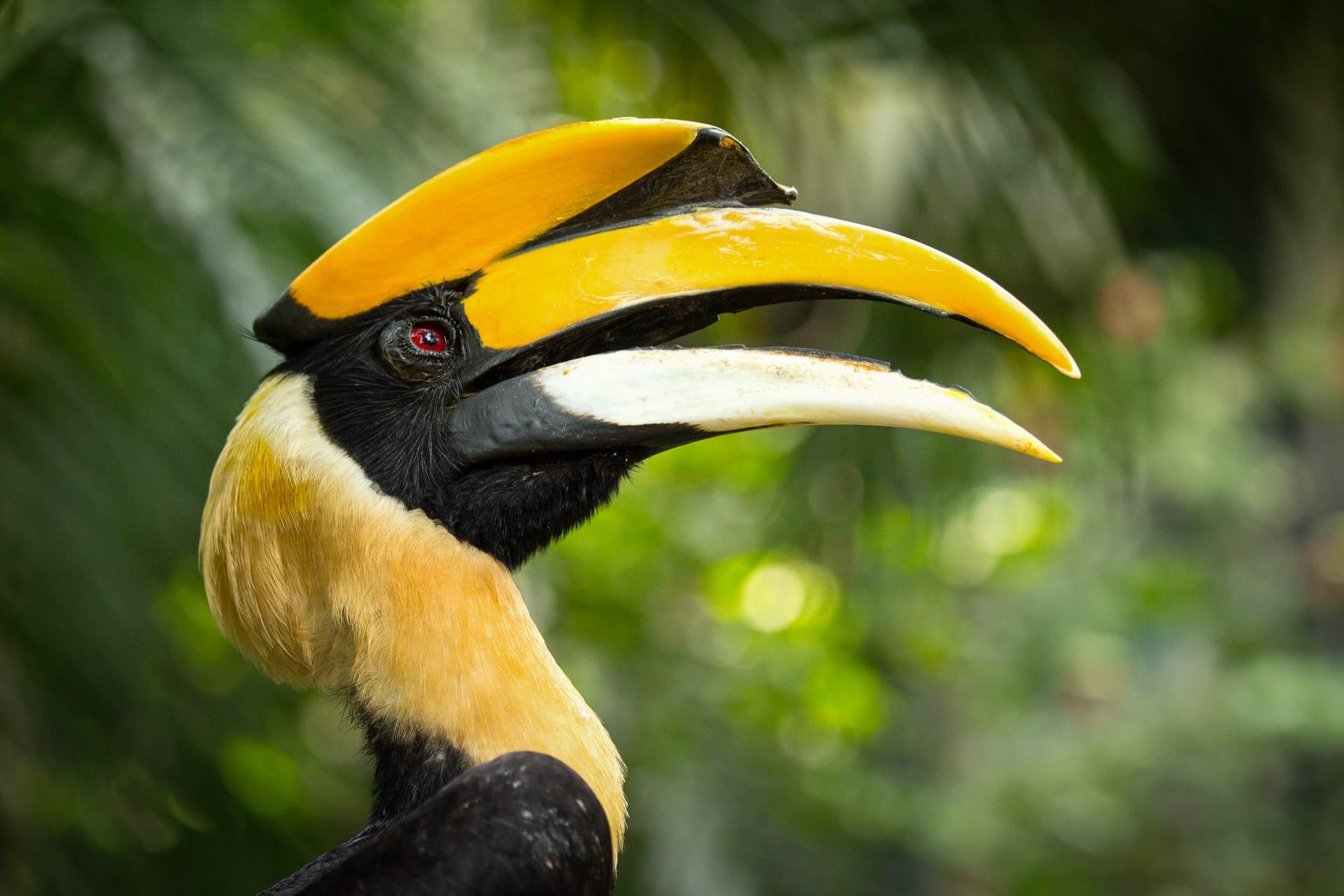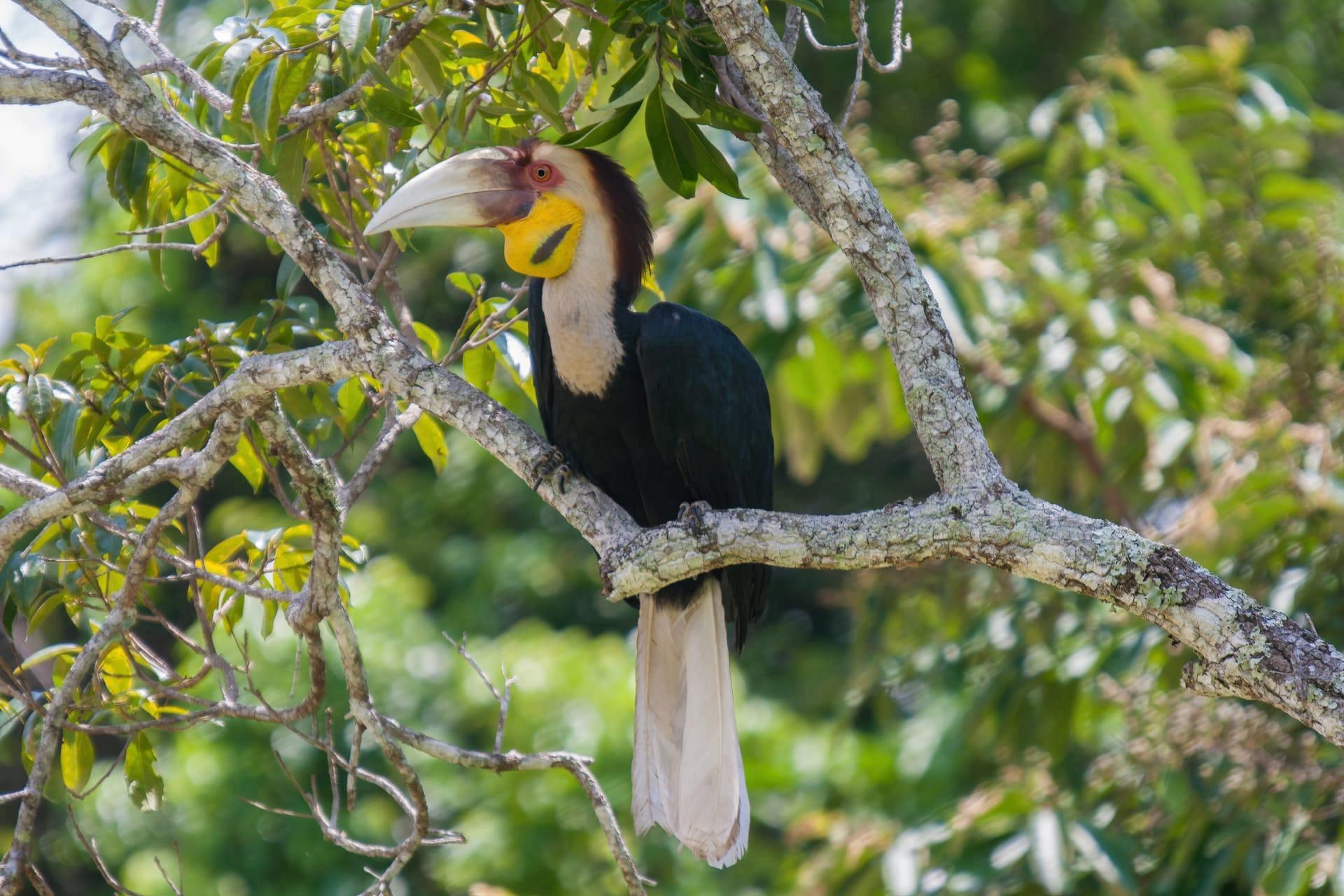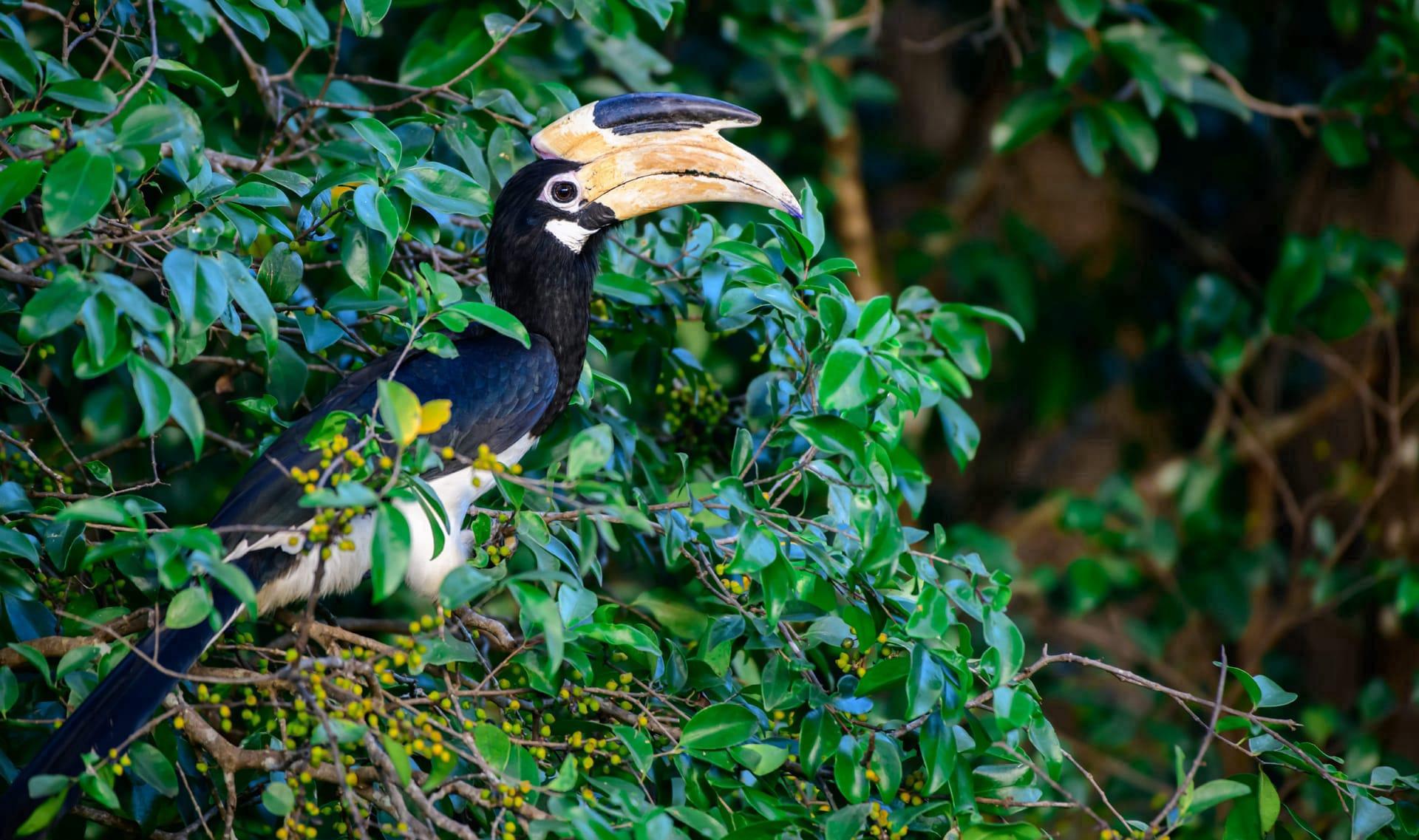1
Hornbills are renowned for their large, often colorful, bills that can be up to one-third of their total body length. This unique feature isn't just for show; it's used for a variety of purposes like fighting, foraging, and even attracting mates. The Great Hornbill, for example, has a bill that can reach up to 10 inches long. Interestingly, these bills are made of keratin, the same material as human hair and nails, making them surprisingly lightweight despite their size.
Another fascinating aspect of hornbills is their nesting behavior. Female hornbills seal themselves inside a tree cavity to lay and incubate their eggs. They rely completely on their male partners to feed them through a small slit in the seal during this time. This nesting process, which can last up to three months, is unique among birds and demonstrates a remarkable level of trust and cooperation between hornbill pairs.

2
Hornbills have a unique adaptation called a 'casque' on top of their bills. In some species, like the Helmeted Hornbill, this casque is solid and used in head-to-head combat among males. The casque acts like a natural helmet, protecting the skull during these intense aerial battles. Remarkably, the Helmeted Hornbill's casque can constitute up to 10% of its total body weight.
These birds are also known for their incredible eyesight, crucial for spotting prey from high in the canopy. Hornbills have binocular vision, allowing them to judge distances accurately – a vital skill when swooping down to catch prey. Their eyes are protected by long eyelashes that resemble a second set of eyelids, known as 'nictitating membranes,' which act like goggles, keeping their eyes safe from debris while flying at high speeds.

3
Hornbills play a crucial role in their ecosystems as seed dispersers. They consume a variety of fruits and, due to their large flying ranges, can disperse seeds over vast areas. This helps maintain the health and diversity of their tropical forest habitats. For instance, the Rhinoceros Hornbill can carry seeds as far as several kilometers away from the original tree, aiding in forest regeneration and diversity.
Another unique characteristic is their vocal communication. Hornbills are among the noisiest birds in the forest, with a range of calls that can be heard up to half a mile away. These calls are used for various purposes, including mating rituals, marking territory, and signaling danger. The Southern Ground Hornbill, for example, produces a deep booming sound that is often mistaken for a lion's roar.

4
Hornbills have a distinct breeding strategy where the male works tirelessly to provide for the female and the chicks. During the nesting period, a male hornbill can make up to 70 trips a day to bring food back to the nest. This level of parental investment is rare among birds and showcases the hornbill's commitment to their offspring's survival.
The longevity of hornbills is also noteworthy. In the wild, these birds can live for up to 20-40 years, depending on the species. In captivity, with proper care, they can live even longer. This long lifespan is unusual for birds of their size and is attributed to their low mortality rate once they reach adulthood, and the absence of natural predators in their high canopy habitats.

5
Hornbills have an interesting method for regulating their body temperature. They use their large bills as heat exchangers. By increasing blood flow to their bills, they can release excess body heat. This thermoregulation is vital in their tropical habitats, where temperatures can vary significantly.
Lastly, hornbills are monogamous, often forming lifelong pair bonds. This is rare in the bird world, where many species are not strictly monogamous. The bond between a hornbill couple is strong, with pairs often engaging in mutual preening and sharing food, which strengthens their relationship and ensures the success of their offspring.